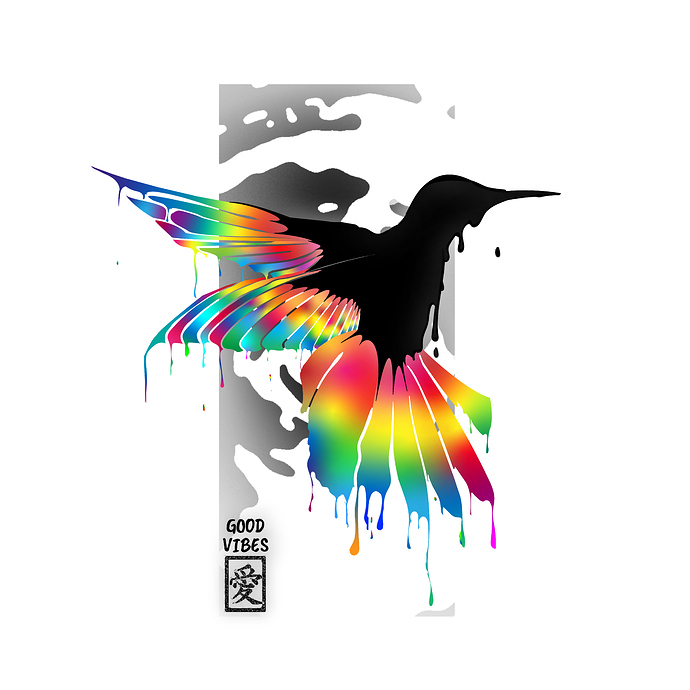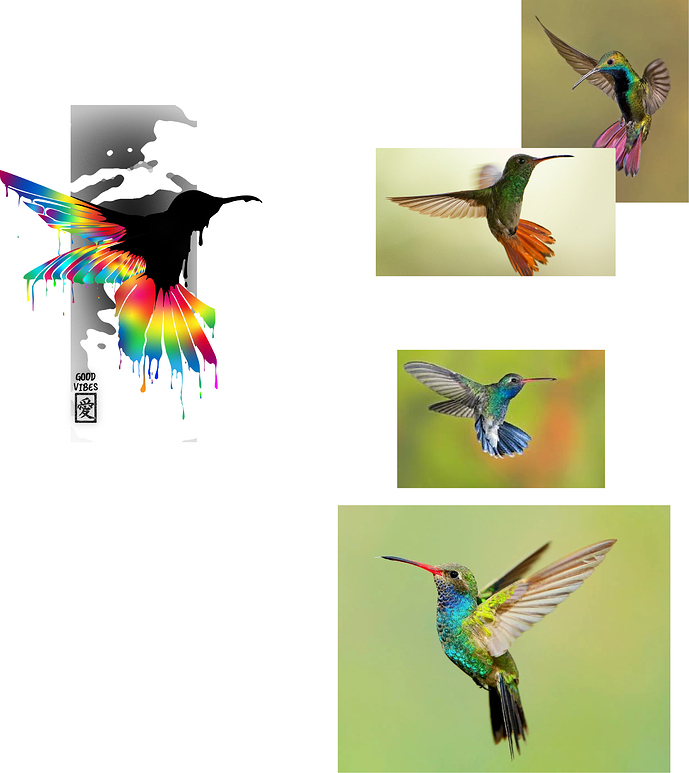I’m not an attorney, but…
Most copyright laws were developed during a time when things were easier to divide into black and white categories. Today, especially with digital works, the gray areas likely occupy most of the space.
Yes, there’s a chance of being sued no matter what. The judge might toss it out of court if he or she thinks the suit has no merit, but if someone thinks you infringed on his or her intellectual property, that person can sue you.
Would you be sued over what you’re proposing? Probably not. If someone did sue you, would they win? I don’t know. What I do know is that win or lose, it would be a huge, anxiety-producing hassle.
I don’t think painting drips could be considered a technique. It’s the way in which the drips are painted that would constitute the technique. That’s arguable and sort of beside the point, though.
The real point, I suppose, is that you saw a hummingbird illustration you liked, drew a hummingbird and then incorporated your interpretation of what you liked from the other hummingbird illustration into your hummingbird drawing. You were inspired by a number of things (including the photos) then borrowed bits and pieces to create something else. Is this legal? I don’t know. Again, whether or not it’s legal is a gray area for a judge to decide in the unlikely event that you were sued.
The thing we’ve sort of ignored in all of this, however, is whether or not it is ethical. People combine bits and pieces all the time in all kinds of ways to create new and better things. I’m not so sure yours is all that new, though. I like what you’ve done, but it’s more of a reinterpretation than an original piece of art.
It’s certainly a nice illustration, but I think you might be trying to justify and rationalize something to be OK when you’re not quite sure of it yourself. Whether you’ve gone too far in appropriating someone else’s ideas is for you to decide. If it were me, I’d likely back away from it a bit and, at least, get rid of the more obvious appropriations, like the drips (which just might be my least favorite thing about it anyway).




